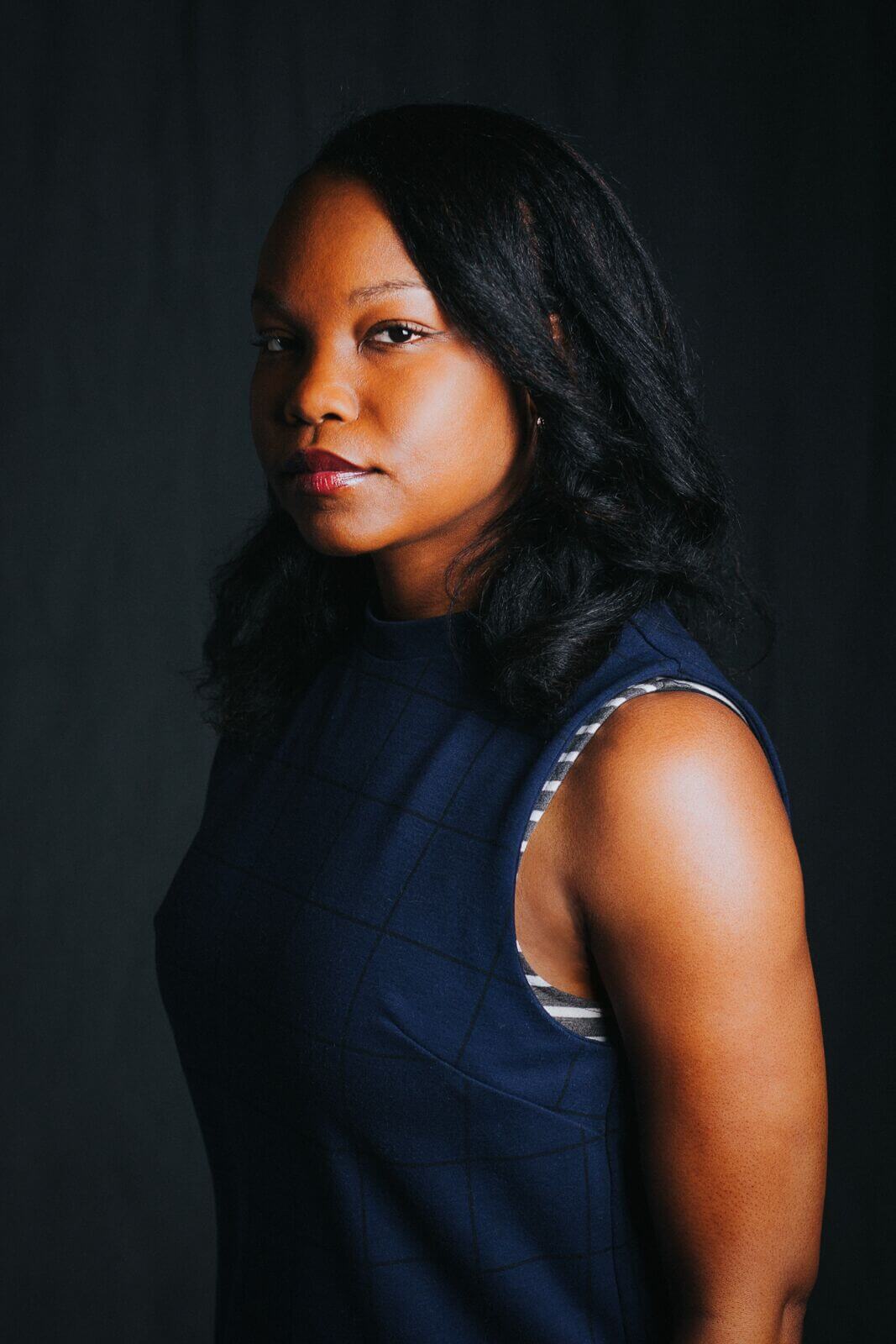
Photo Credit: Adrianne Mathiowetz
Midwestern Gothic staffer Laura Dzubay talked with author Nafissa Thompson-Spires about her novel Heads of the Colored People, the necessity of empathy for characters, structuring short story collections, and more.
**
Laura Dzubay: What’s your connection to the Midwest?
Nafissa Thompson-Spires: I came to Illinois when my husband took a job at the University of Illinois, and I also entered the MFA program there. Now we’re both professors at the university.
LD: As a setting for rich relationships and interactions, the Midwest is often underestimated. Are there any qualities or features of the Midwest that you find yourself coming back to, in real life or in your writing? How does it function differently, if at all, from other regions of the U.S.?
NTS: I haven’t really written about the Midwest at all yet. Illinois is particularly flat—geographically—which is a stark change for me as a native Californian. I may be interested in thinking about that someday.
LD: In your forthcoming collection, Heads of the Colored People, the stories illuminate their characters in a variety of different ways, from the mothers exchanging notes via their daughters’ backpacks in “Belles Lettres” to the religious conflict in “Wash Clean the Bones.” How do you investigate the nuances of different perspectives in your work, from the research to the writing itself?
NTS: I try to make sure that each voice I represent feels as real as possible. I’ve also found—and this something that I learned from Jacinda Townsend at Callaloo—that you can’t write well about a character without empathy. When a character feels really flat or one-note, sometimes it’s because we as writers haven’t occupied their perspective well enough and need to search for the empathy. That’s become one of my go-to strategies for revision and characterization.
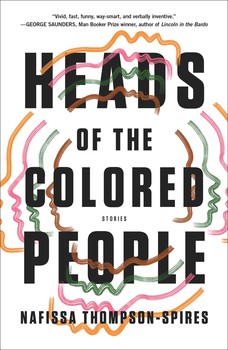
LD: How do you go about developing an idea for a short story? Were these stories born in similar ways, or did they all grow out of very different processes?
NTS: Often I just have a line or an image in my head. With the titular story, the first line came to me, and I pursued it, to figure out who this Riley character was. Sometimes, I have an idea of the shape of as story I want to write, but often the story reveals itself to me during the drafting. There has to be space for both the discipline and organization (outlining, etc.) and the more metaphysical, subconscious parts of writing.
LD: Heads of the Colored People features some recurring characters, such as Fatima, as well as some that are unique to singular stories. In a series of stories that sometimes revisit familiar characters and sometimes introduce new ones, how did you make decisions regarding the structure of the collection? Did the order of the pieces come naturally, or was it something you had to think about a lot?
NTS: The order of the stories was the most difficult thing to figure out. The Fatima stories almost work as a small novella, and ultimately, it made sense to me and my editors and agent to put them together. For other stories, we wanted to vary the tone, not putting too may sad stories next to each other or too many male voices together, etc.
LD: How do your experiences or memories of specific places play a role in your writing?
NTS: I have strong visceral memories of many regions in California. I grew up in the Inland Empire (an hour east of Los Angeles), but commuted half an hour to private school every weekday. So I saw and passed through several cities on the commute. California is somewhat unique in that you can drive twenty minutes to an hour and be at the ocean, the mountains, lakes, or the valleys. I feel like the many different climates and natural sights I’ve encountered are part of the California experience, and I try to capture some of that in my attention to setting—though I could do a better job of it.
LD: In the past, you’ve written short fiction as well as essays and journal articles. How accurately does this experience reflect the types of genres you usually read? Do you prefer reading any genres over others, and do you find that what you’re reading influences your writing style?
NTS: I was trained as a literary critic though my PhD research, and still love and value that kind of academic writing. But my preference is for fiction—both the writing and reading of it. My work is in conversation with both other fiction and criticism. But nothing moves me the way that fiction does.
What I’m reading can influence my writing. Other writers have said this (someone recently in Lit Hub; I can’t remember who), but reading backward into older centuries can have an especially useful effect on writing style and make it more unique. If you only read other contemporaneous writers, you’ll likely sound just like them and less unique.
LD: What is your writing routine like? Do you have any specific environments or habits you like to come back to?
NTS: At its best, my routine is quite disciplined, and I write on the days when I’m not teaching. I believe in the importance of messy first drafts and space for revision. I try to write what I can when I can and not worry too much about how it will take shape or the order. That’s what revision is for.
I also have to write with the television on. Music doesn’t work for me, or I will become very distracted, dancing and singing. But TV—like reruns of the original 90210 or ‘90s talk shows on Youtube—works like a charm.
LD: What’s next for you?
NTS: I’m working on a novel that features Fatima in her mid-thirties, so hopefully we haven’t seen the last of her.
**
Nafissa Thompson-Spires earned a PhD in English from Vanderbilt University and an MFA in Creative Writing at the University of Illinois at Urbana-Champaign (UIUC). She is the author of the short story collection Heads of the Colored People (forthcoming 2018 with Atria/ 37 Ink in the United States and with Chatto and Windus in the UK) and has a novel under contract with the same publishers.
Her work has appeared or is forthcoming in The Paris Review Daily, Dissent, Buzzfeed Books, The White Review, The Los Angeles Review of Books Quarterly Journal, StoryQuarterly, Lunch Ticket, East Bay Review, and other publications. Her short story “Heads of the Colored People…” won StoryQuarterly’s 2016 Fiction Prize, judged by Mat Johnson. She currently works as an Assistant Professor of Creative Writing at UIUC and is an alumna of Callaloo, Tin House, and a 2017 Stanley Elkin Scholar at the Sewanee Writers’ Conference.
May 17th, 2018 |
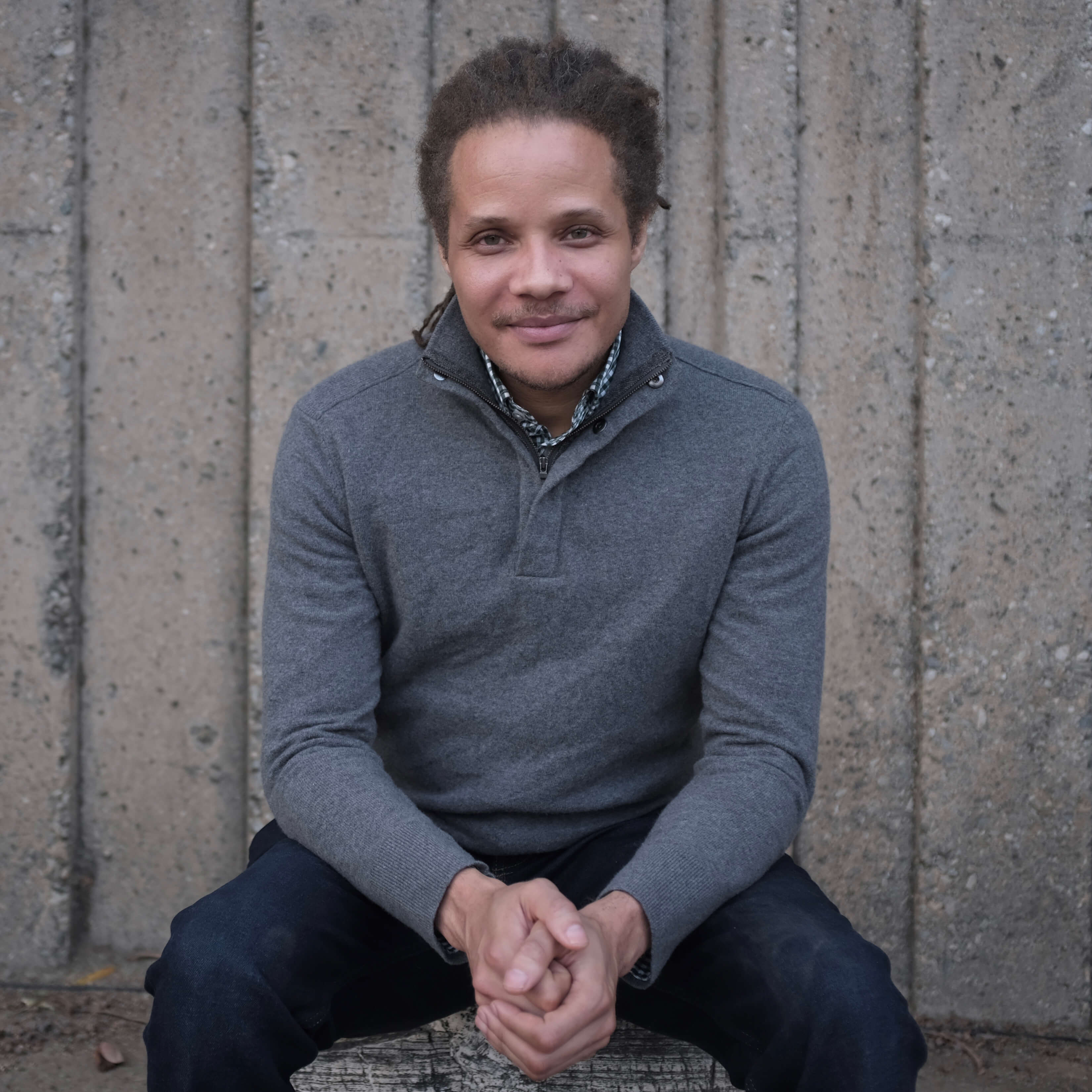
Photo Credit: Arash Saedinia
Midwestern Gothic staffer Kathryn Cammell talked with author Jamel Brinkley about his debut collection A Lucky Man, the challenge of writing a short story, how to overcome rejection, and more.
**
Kathryn Cammell: What’s your connection to the Midwest?
Jamel Brinkley: I drafted and/or revised every story in my debut story collection while living in the Midwest—in Iowa City and Madison, specifically.
KC: Your forthcoming debut, A Lucky Man, is a collection of fiction short stories about the interwoven lives of men and the nuances of their relationships with other people in their lives. What drew you to this subject matter?
JB: I didn’t set out to write about one specific thing, but I suppose I must have been drawn to my subject matter by my own experiences, memories, and obsessions. In my life as a boy and then a man, I’ve thought a lot about masculinity (especially black masculinity) and human relationships of various kinds. A Lucky Man is a work of the imagination, but really I wrote about the kinds of people I’ve known, whose lives are rich, complicated, nuanced, and full of love and loss.
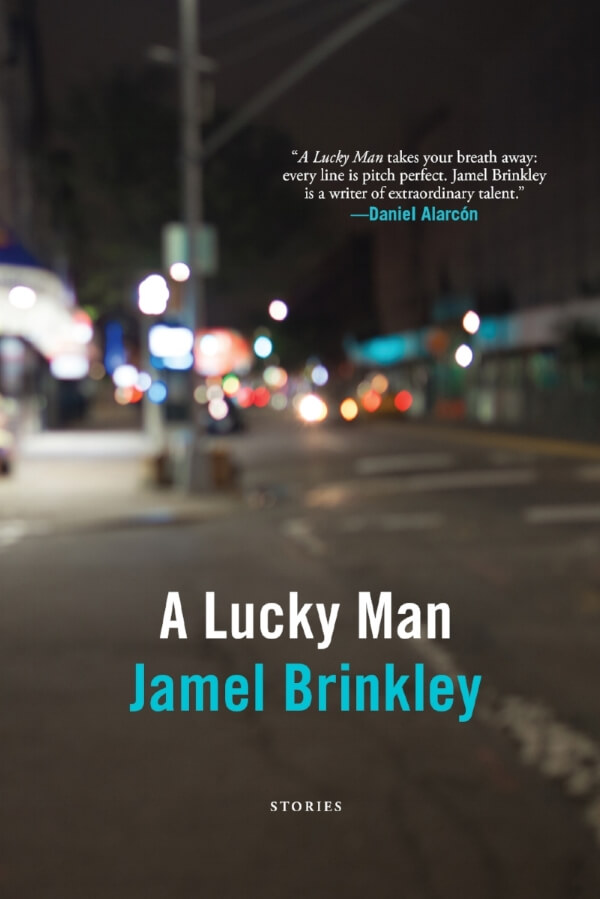
KC: What is the importance of short stories, especially when many short story authors are pressured to write longer works?
JB: I’m tempted to say that simply resisting the market-driven preference for longer works itself makes writing and reading short stories a virtue. But I won’t stop at that. The compression required in a short story, whether it’s five pages or thirty pages, presents a distinct formal challenge (for the writer) and pleasure (for the reader) that you don’t get from a longer work, which has its own challenges and pleasures. Whereas even good or great longer works typically have the freedom to slack off every once in a while, good short stories usually have to work from sentence to sentence, in a lapidary way. Also, and maybe more importantly, I think they tend to mirror how I, and maybe other people, actually narrate life, not as one long cohesive, plotted narrative, but as a collection of smaller stories, each one told as though at a bar with a friend: “Hey, let me tell you what happened the other day…” I like that stories tilt in some ways toward poetry, and I like the feeling that you can hold an entire story in your mind.
KC: The stories in your collection focus on luck and its absence, in the lives of men living in Brooklyn and the South Bronx: how did your own childhood growing up in those places influence what you chose to explore in your stories?
JB: As I mentioned, I don’t feel like I consciously chose to explore any particular thing in my stories. My childhood growing up in a particular place probably influenced me the way anyone’s childhood growing up in a particular place would. Toni Morrison said that “universal” is a word hopelessly stripped of meaning. She went on to say, “Faulkner wrote what I suppose could be called regional literature and had it published all over the world. It is good—and universal —because it is specifically about a particular world. That’s what I wish to do. If I tried to write a universal novel, it would be water.” I wrote about what I didn’t know about the particular things I know, and what I know is, largely, Brooklyn and the Bronx. If I managed to depict, even in an oblique way, a fraction of what life in those places has been like, then I can be happy with that.
KC: How do the places that you lived in the Midwest compare to Brooklyn and the South Bronx? Is there anything from your time in each place that you can identify as influencing your writing?
JB: The thing that struck me immediately about Iowa City and Madison is the quiet in those places, relative to where I lived in New York. Sure, there was the occasional band of frat boys hooting and hollering, or the sound of a car passing in the rain, but mostly my sense was, “Wow, it’s really quiet here.” I don’t know that this quiet influenced my prose itself, although maybe it did. Some stories, many of the ones I began in the Midwest, do have a quieter prose style than the stories I arrived with. Mostly, I think the quiet and relative lack of distractions just helped me get more writing done.
KC: Since having recently gone through the process, do you have advice for writers who are looking to get their books published?
JB: Try not to get too bent out of shape about rejection. My book was rejected by the vast majority of publishers who looked at it. If possible, try to choose an agent and an editor whom you instinctively trust, who push or nudge you as necessary but always show respect for you and your work and understand what you’re trying to do. Have people in your life who are also going through the same process you are, or who have gone through it. They will understand the very particular challenges and anxieties involved in the process. Regardless of what is happening, good or bad, keeping writing and reading so you stay connected to the fundamental joys that made you want to be a writer in the first place.
KC: What does your writing process look like? Do you have a specific environment where you find you work best?
JB: I always work at home, wherever home is, unless I’m at a residency or something like that. I’m not a writer who can work in, say, a cafe. I think my process is primarily character- and language-focused. I write first drafts slowly, asking lots of questions, nitpicking my way from sentence to sentence, but I try not to think too much about issues of craft or the kinds of things that usually come up in workshops. If I’m not under pressure from a deadline, when I’m done with a draft I let it sit for a while. When I look at it again, I start thinking more deliberately about craft: scene, point of view, dialogue, etc. I find Robert Boswell’s transitional drafts method helpful. Finally, I try to make sure I haven’t “crafted” the life out of the story. If I feel stuck, then I have trusted readers I can turn to.
KC: What’s next for you?
JB: I want to write more stories, and maybe something longer too. We’ll see.
**
Jamel Brinkley was raised in the Bronx and Brooklyn, New York. He is a graduate of Columbia University and the Iowa Writers’ Workshop. His work has received fellowships from Kimbilio Fiction and the Wisconsin Institute for Creative Writing, and beginning this fall he will be a 2018-2020 Wallace Stegner Fellow in Fiction at Stanford University.
May 10th, 2018 |
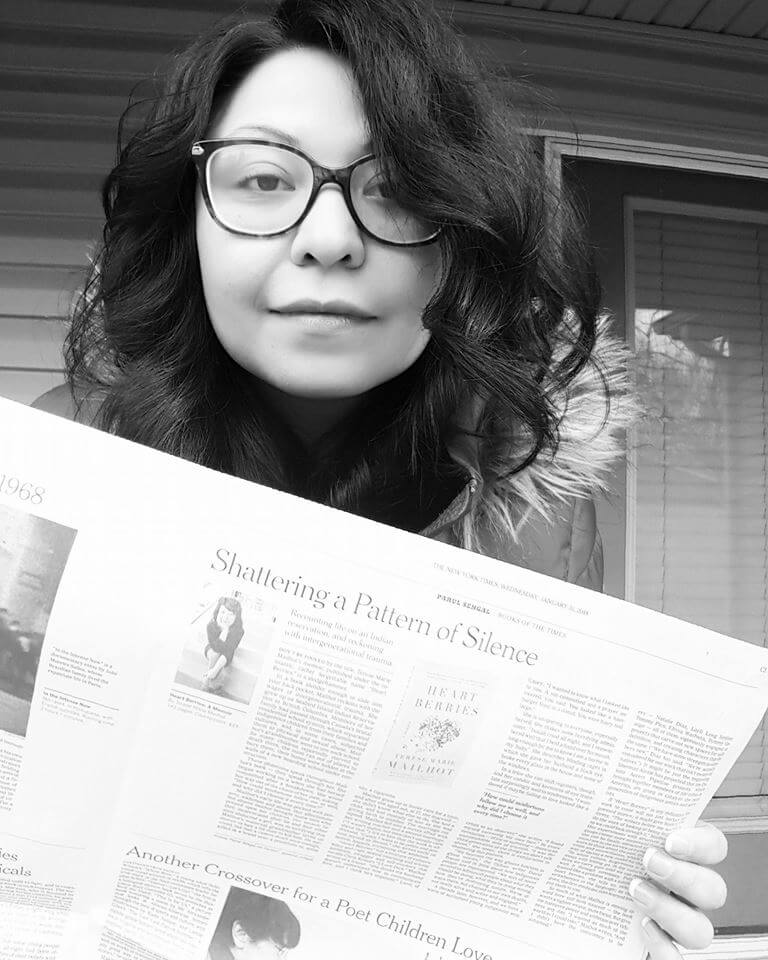 Midwestern Gothic staffer Laura Dzubay talked with author Terese Mailhot about her novel Heart Berries, willful blindness, knowing when you’ve hit your voice, and more.
Midwestern Gothic staffer Laura Dzubay talked with author Terese Mailhot about her novel Heart Berries, willful blindness, knowing when you’ve hit your voice, and more.
**
Laura Dzubay: What’s your connection to the Midwest?
Terese Mailhot: I fell in love with my husband, and he’s from Evansville, IN. He played football in that small town, his parents still live there, so I wanted to work close to them. That’s why I applied to the Tecumseh Postdoc at Purdue. I got it, and we rolled out of our little adobe house in New Mexico. We love it here.
LD: In terms of setting, Heart Berries is focused primarily on the Seabird Island Indian Reservation in British Columbia. How do considerations of place factor into your writing process? Are there some settings from your life that would feel more natural than others in the context of a memoir such as this?
TM: We call it Seabird Island Rez where I’m from. I just love the ring of that. I loved my rez and the life on it. The vibrancy of that place still thrills me, and I long for the old house I grew up in. That house burned down. My own uncle said it was cool to tear up the land, where my grandmother planted and cultivated so much beauty. So, I lament. I miss that place, and can never really go home again. For Heart Berries it was necessary to explore the meaning of home, and, for me, your home is about the land. The story of the land, and then how your family came to be, and how they cultivated that space for themselves.
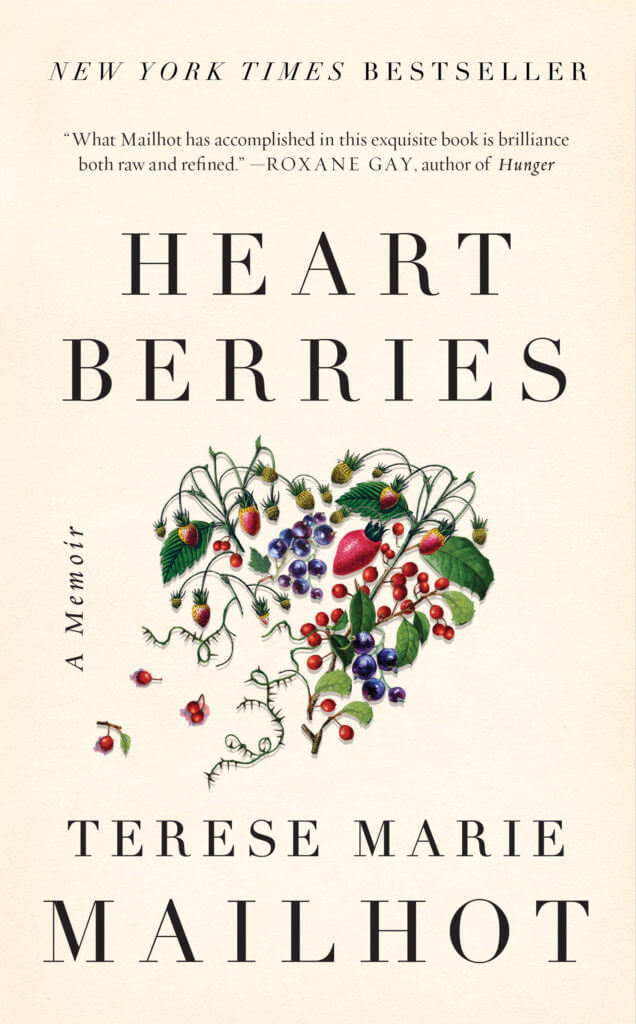
LD: In an interview with The Atlantic, you talked about “willful blindness” as a technique for resisting the rules and preconceptions of things you’re “supposed” to do. After thinking about this during the composition of Heart Berries, do you see it coming up as a regular function of your writing moving into the future?
TM: No. I think each book requires something. Heart Berries needed me to put the blindfold on and now I feel the compulsion to take it off. I’m not afraid to explore working outside of the rules that service good story. I want to take my time, and I used to feel urgency. I used to feel anger, and now I feel more. Also, the center and focus of my work has broadened. The content is different now, and it’s going to take, literally, more words to express how healing has worked for me. It’s a good kind of problem that’s asking me to write differently. Eyes open.
LD: As a memoir, this book has already been recognized for its fearless approach of difficult and traumatic subjects. When did you decide that this was a story you needed to tell?
TM: I think when I found myself consumed with the death of my father. I was always trying to express how his death felt. It took me a long time, but I was able to write that line, “My father died at the Thunderbird Hotel on Flood Hope Road.” Then it was on. It was all on, and I just wrote without relenting after that.
LD: Heart Berries is relatively short overall, but it’s also packed with emotion, creativity, and originality. How did your relationship with the idea of convention change during this project?
TM: I wanted to write a full book. I wanted to please everyone who believed in me, but I couldn’t. I just was writing and couldn’t worry about pleasing them, because what I was writing was worthwhile. I think you know when you’ve hit your voice. You know when you’re almost playing the music in your head, and you have to honor that voice. I knew I had to honor it, and revise according to that honor.
LD: Do you believe writer’s block exists, and if so, how do you deal with it?
TM: Yes. Writer’s block is part of my process. Some days I can’t write. As long as I make a note on my phone, or in my notebook, I’m okay. I also read when I can’t write, so that helps.
LD: How can you tell when a piece of writing is finished?
TM: It feels finished. You have to give it time, because sometimes it feels finished for now, and then you wait a few months, or a year, and you can go back and see if you’re right. That’s kind of how I work.
LD: What’s next for you?
TM: Book two. Sharing my success. Going back to my hometown when I get my first real check, and playing the slots with my brother. That’s the dream. My life is dreamy.
**
Terese Mailhot is from Seabird Island Band. She graduated with an MFA from the Institute of American Indian Arts. Her writing appears in West Branch, Guernica, Pacific Standard, Elle, The LA Times, Longreads, Medium, and elsewhere. She is the author of the New York Times bestselling Heart Berries: A Memoir. She serves as faculty at the Institute of American Indian Arts and she’s a Tecumseh Postdoctoral Fellow at Purdue University.
May 3rd, 2018 |
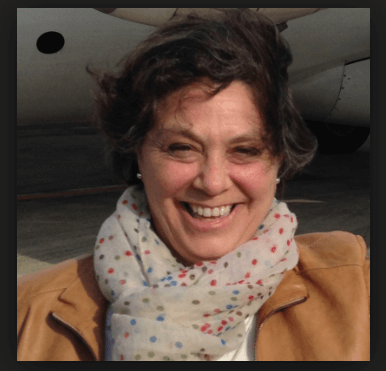 Midwestern Gothic staffer Kate Cammell talked with photographer Laura Migliorino about her creative process, the overlooked diversity of suburban life, outside perspectives of American culture, and more.
Midwestern Gothic staffer Kate Cammell talked with photographer Laura Migliorino about her creative process, the overlooked diversity of suburban life, outside perspectives of American culture, and more.
Laura Migliorino was born in Cleveland, Ohio in an Italian–American family. Her background has been very influential her life, shaping her values and character. Migliorino spent a majority of her childhood in suburban Chicago after her family moved there when she was three years old. She has a B.F.A from The School of the Art Institute of Chicago, and an M.F.A from the University of Minnesota. She is a professor of Art at Anoka-Ramsey Community College near Minneapolis, MN. Migliorino has exhibited world wide, is the recipient of Jerome Foundation Grants, and several Minnesota State Arts Board Grants. Her work is in several permanent collections including the Walker Art Center, The Weisman, and The WareHOUSE Wieland Museum.
***Kate Cammell: What’s your connection to the Midwest?
Laura Migliorino: I am a Midwesterner through and through, all along the Great Lakes. I was born in Cleveland, but moved to Chicago when I was three years old. Chicago has the greatest influence on my character and ethos. A hardworking, rust belt city where people talk to you at a bus stop and friendly. I love the line “I saw a man who danced with his wife, in Chicago” from that great song. It embraces a tenderness that I believe is at the root of Midwestern values. I now live in Minneapolis really the upper Midwest, true flyover territory. Minnesota takes the Chicago friendly to a reserved, but lovely politeness. When I first moved there over 30 years ago I sort of resented the politeness, but as we have become a rude and indifferent culture I appreciate the honesty and openness of the Midwest.
KC: Your photography is interested in exploring people’s relationship to place and boundaries. Has your work in the Midwest led you to discover anything particularly revealing about Midwesterners’ relationship to their region?
LM: I think the thing that stands out the most is we don’t care if we are fly over country and that the world doesn’t really know anything about the Midwest. Now I define the Midwest as Minnesota, Iowa, Illinois, Indiana, Wisconsin, Michigan and Ohio. Many of my friends laugh when the national news uses the term “midwest” when they are referring to Kansas. We know who we are, and don’t need to prove anything to anyone else.
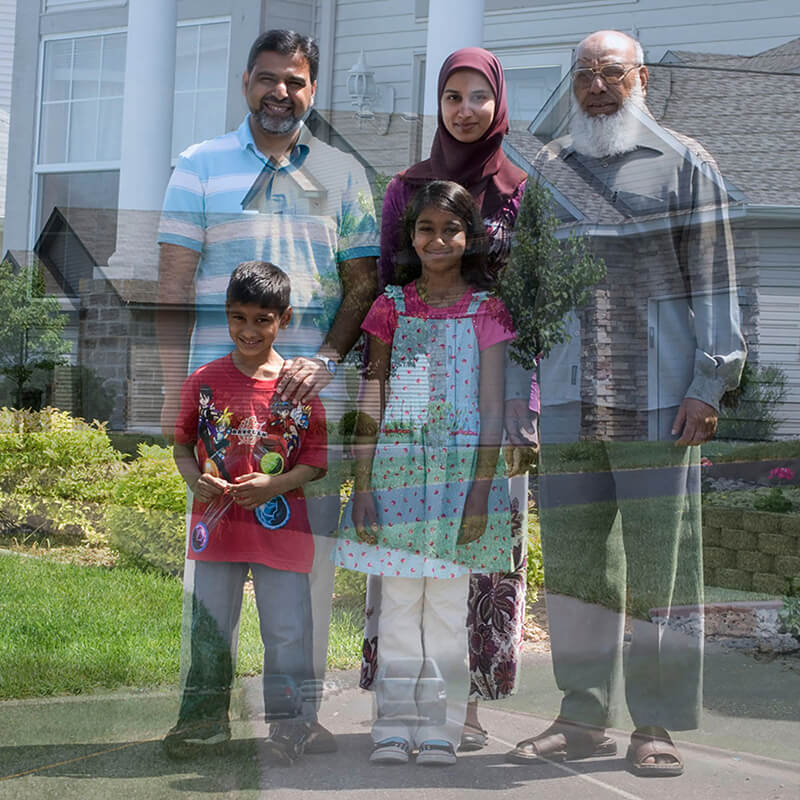
KC: Your project, The Hidden Suburbs, focused on capturing the often overlooked diversity of suburbs. You photographed immigrant, biracial, and same-sex families within Minnesota suburbs. What ignited your interest in exploring this subject?
LM: There are several factors that inspired The Hidden Suburbs. I live in the city of Minneapolis and teach in the northern suburbs. Like many city dwellers I thought of the suburbs as this monolithic, bland place full of white evangelical Christian Republicans. I saw them heading to a Mega Church on Sunday and homeschooling their kids. Suburbanites sought out a uniformity and familiarity that felt safe devoid of anything different. During my commute I saw the suburban boom, day in and day out. One day I thought about the people I know who live there, they did not fit into my stereotype of a suburbanite and that sparked by curiosity. I began my quest to find a diverse suburb.
KC: In this current political climate, this series feel just as relevant as when it was released. How has this heightened rhetoric about immigration played into the work you’re doing now?
LM: This is a great question because the demographics of suburbia are changing rapidly and are already showing a political shift blue. New immigrants are moving directly to the suburbs, skipping the traditional inner city enclaves of previous immigration patterns. They are seizing the American dream of a house in the suburbs right away. As a result areas that were once European and Christian are increasingly non – white, and non – Christian. The political impact is beginning to show as inner ring suburbs have become more liberal and tolerant of diversity.
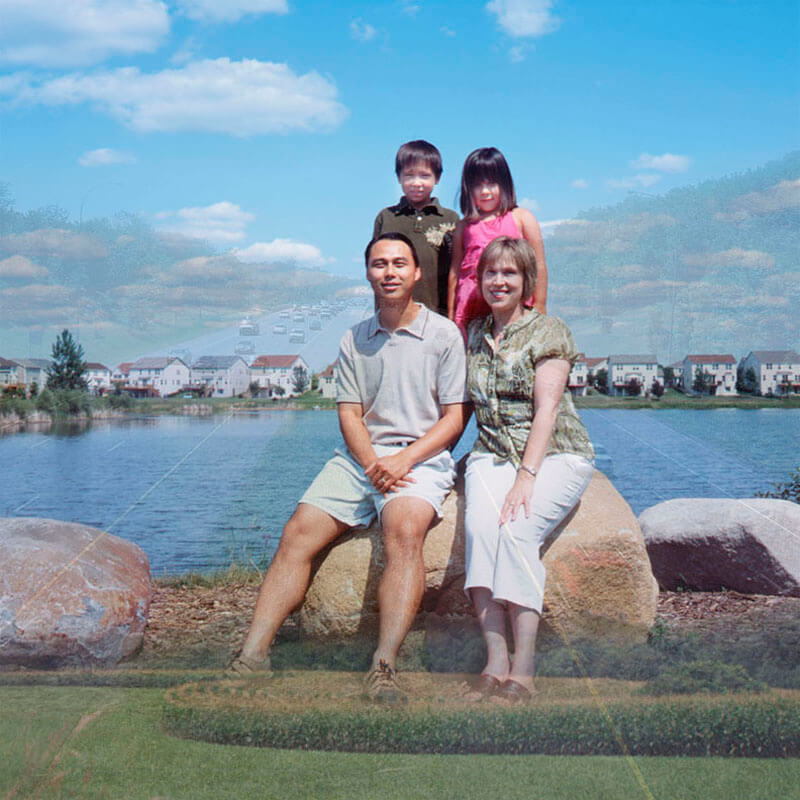
KC: You’re currently in London lecturing to Kingston College’s American studies students about suburbia. How has it been getting to hear outside perspectives of American culture, has it challenged your view of suburbia or the country’s culture in any way?
LM: These students have a good understanding about the United States and are interested in the relationship between the US and England. They know that the American suburban idea is rooted in English country life, but we added an egalitarian component that cuts across class. The English manor house did not have that but over time the English and American suburbs grew to be similar. It is also what sets us apart from Europe, where the suburbs are slums and the inner city is posh and expensive.
KC: Is there a piece of advice that you’d wish you known when you were in your student’s shoes that you make sure to share with them?
LM: Yes I do. The creative process is a disciplined practice, not some spontaneous outburst due to mental illness, grief, angst etc… A successful artist works on a regular basis, making both good and bad art. They don’t wait for inspiration they seek it out.
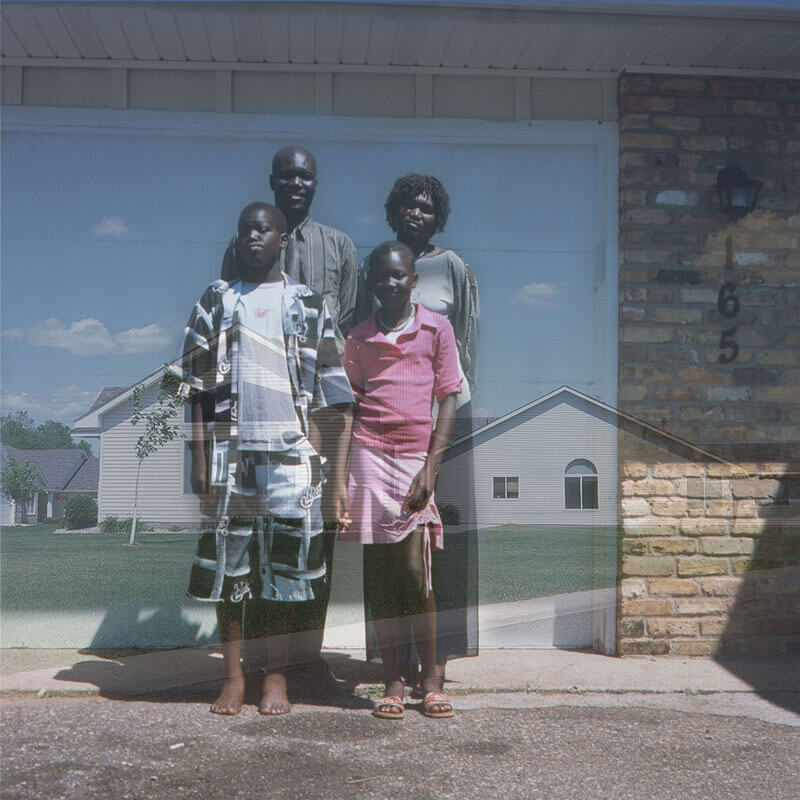
KC: Where do you find inspiration for your photographs?
LM: Inspiration for my photographs come from what ever is capturing my attention long enough to hold it. Largely the work is a result of what I find interesting in a moment, and I am compelled to explore that topic. That said I am often attracted to architecture, buildings, houses, and how people relate to their shelter. In both The Hidden Suburbs and the following series Occidente Nuevo: Recycled Tijuana portraits were an integral part of the image. The work I am doing now is devoid of people.
KC: What’s next for you?
LM: I am currently working on a series of abandoned homes, called Absentia: Abandoned Past. The series Absentia: Abandoned Past explores spaces in a state of abandonment or unexpected departure, creating a feeling of being animated and inhabited but absent at the same time. I am interested in the in between period in the life of the house, the transition from one era to another in the lifetime of the place. Houses are like the human body; they are born fresh, clean, and full of hope. The home ages, adapts, and sags; occupants leave traces but take their memories with them. A house may be reborn and be rehabilitated; sometimes it dies and becomes a memory.
***Our Views from the Heartland series is a new series we started to give some recognition to the incredible photographers who submit their photos to us regularly. In it, we talk with some of our favorite photographers who we feel capture the essence of the Midwest in their incredible photos. Each month, we’ll post a new interview with a photographer in which we discuss their creative process, the intersection of photography and literature, and other fascinating topics.
April 27th, 2018 |
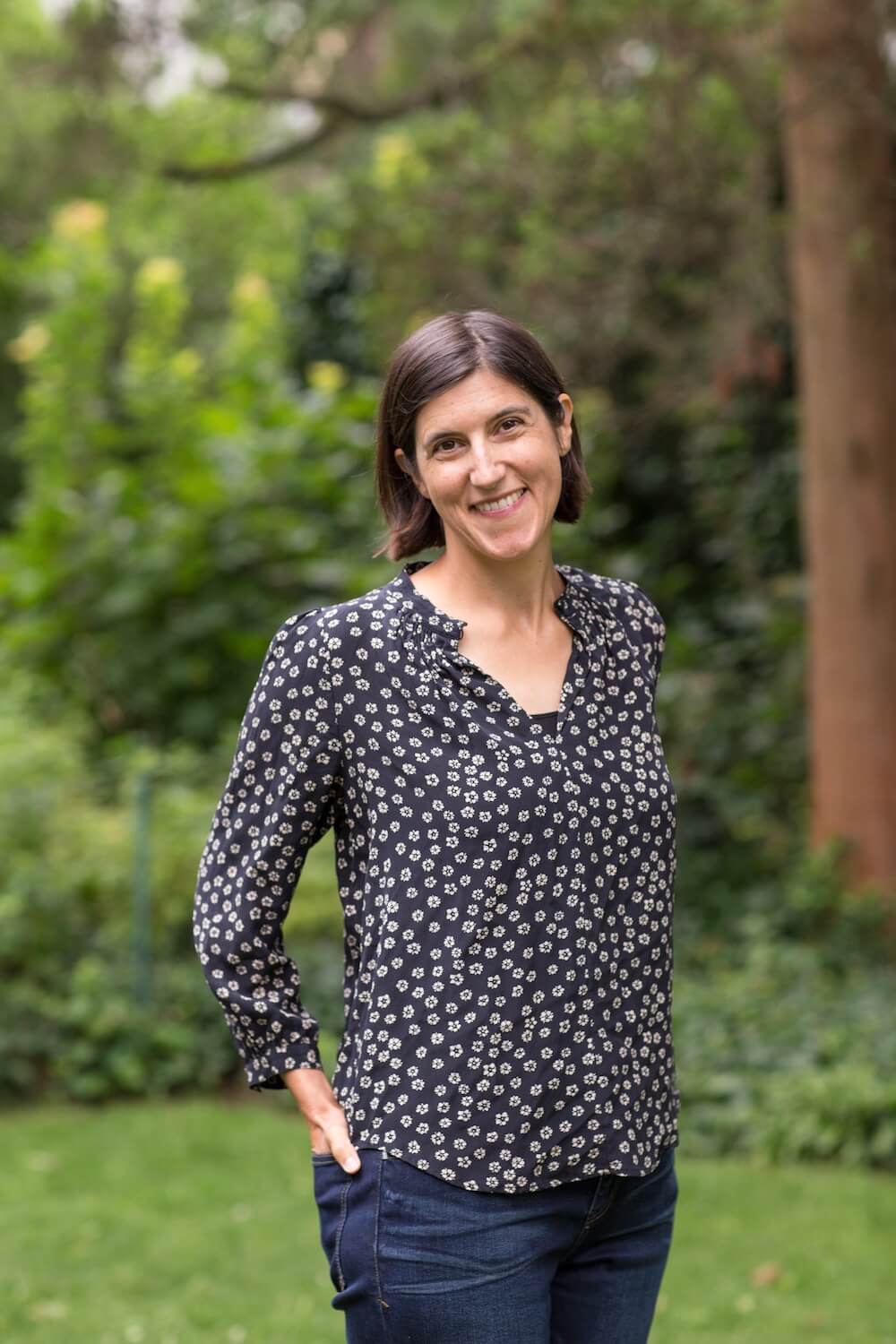 Midwestern Gothic staffer Kathryn Cammell talked with author Curtis Sittenfeld about her collection You Think It, I’ll Say It, the importance of place, adapting a classic, and more.
Midwestern Gothic staffer Kathryn Cammell talked with author Curtis Sittenfeld about her collection You Think It, I’ll Say It, the importance of place, adapting a classic, and more.
**
Kathryn Cammell: What’s your connection to the Midwest?
Curtis Sittenfeld: I grew up in Cincinnati, Ohio; attended graduate school in Iowa City, Iowa; and have lived in St. Louis, Missouri since 2007. I’ve also lived on the East Coast and for a couple years in California. But I’ve spent more than half my life in the Midwest.
KC: In your personal essay for The New York Times, “Loving the Midwest,” you talk about your return to the Midwest region to raise your family after living on the East Coast. In the piece, you were able to explore and expose the complexities of the Midwest region, which all too often has a tendency to be dismissed as simple. Do you have tips on how to approach writing about a place and its people honestly without exploiting stereotypes and myths?
CS: I try to make my characters as complex as real people instead of borrowing from existing pop culture, which I think is where the stereotypes are.
KC: What is the importance of place in your writing?
CS: Place tends to be a backdrop and not what I start with, but it’s an important backdrop. I think feeling grounded in a distinct place—and again, in an authentic rather than fake version of a distinct place—makes fiction more alive and vivid for readers.
KC: Is there anything in your writing style or choices that you feel can be traced back to your time spent living in the Midwest region?
CS: I’m sure the plots and settings of my novels and stories have been influenced by where I live. For instance, my fourth novel, Sisterland, was set in St. Louis and based on an earthquake prediction made many years before, which attracted a surprising amount of media attention given its tenuous relationship to science. I learned about the prediction while in Iowa, chatting with a friend who’d grown up in Jefferson City, Missouri. So in the most literal sense, this is a conversation I probably wouldn’t have had if I lived in Brooklyn. At this point, my default is to set fiction in the Midwest—there has to be a reason for me to set it elsewhere.
KC: Your last novel, Eligible, is a highly-praised modern version of Pride and Prejudice. How did you find the challenge of reclaiming such a known plot and making it your own?
CS: I definitely saw what I was doing as homage or fan fiction and not my declaration to the world that I am the 21st century version of Jane Austen. Only Jane Austen is Jane Austen! With that outlook guiding me, I had a lot of fun existing in her world.
KC: Why did you choose to adapt this Jane Austen novel? Was there something about the plot and characters that spoke to you in particular?
CS: It’s more like the adaptation chose me. Two British editors reached out in December 2011 to see if I’d be interested in participating in what they were calling The Austen Project, or six contemporary writers telling modern versions of each of Austen’s six novels. How could I resist? They suggested that Pride and Prejudice could be the right fit for me, because my own work shares its focus on class and romance and family. I don’t think I’d have retold a different Austen novel—I admire them all, but, like many readers, I do feel a special affinity for P&P.
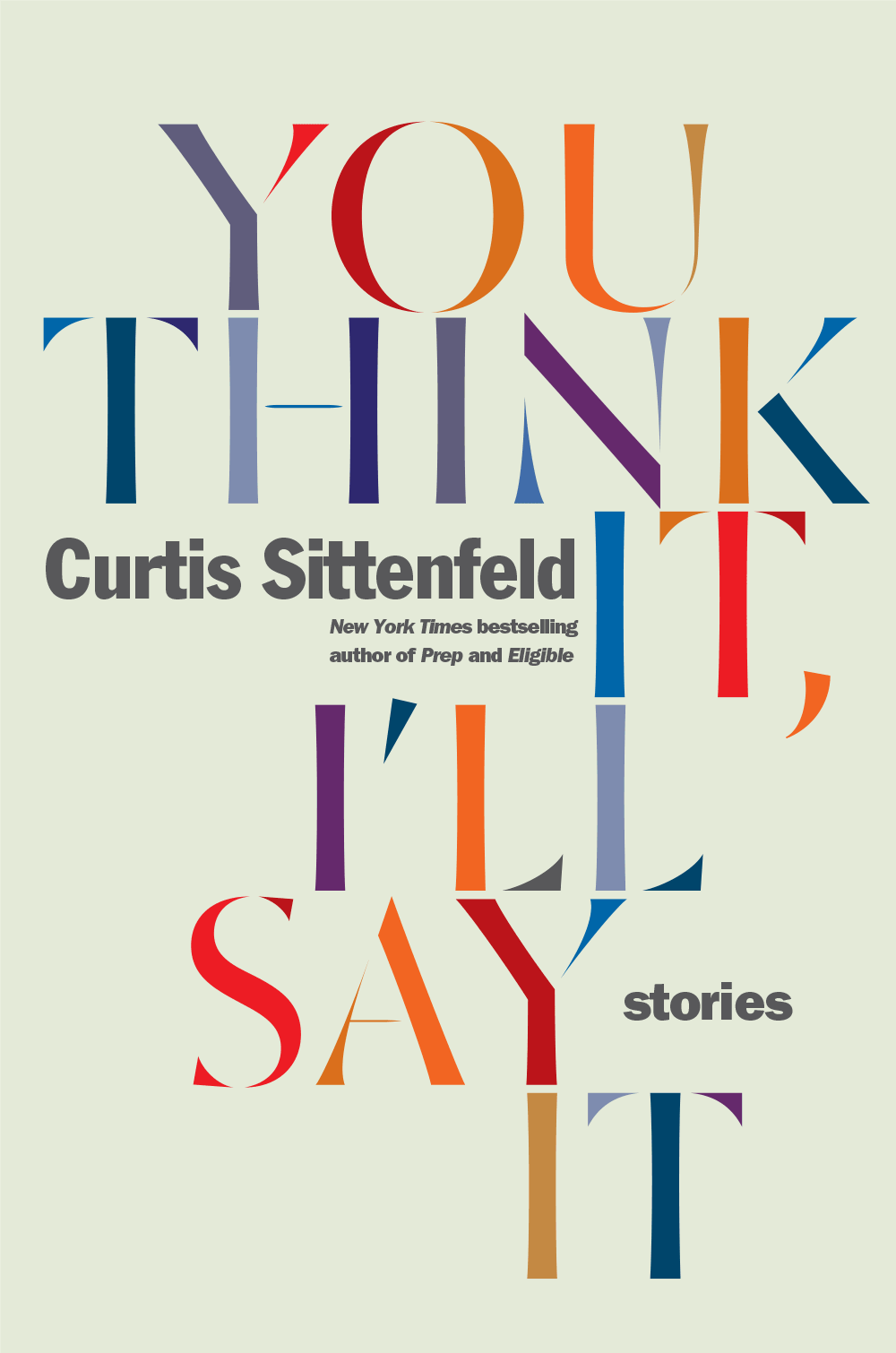
KC: Your first collection of short fiction, You Think It, I’ll Say It, is forthcoming in April, 2018. What drew you back to the short story form after publishing fiction novels?
CS: I’ve always loved reading and writing stories, but I did get away from writing them after the publication of my first novel, Prep, in 2005. Once you gain a bit of professional traction in a particular genre, the expectation is that you’ll continue with that form. And I love reading and writing novels, too. But in 2016, after the publication of Eligible, I’d been busy promoting the book and not writing much, and I decided to try my hand at a story again as a way of returning to writing without feeling overwhelmed by the scope and ambition of a new novel. That story, “Gender Studies,” opened a sort of literary vein for me, and several more stories poured out relatively quickly.
KC: What do you find the differences to be between writing short fiction and novels?
CS: Um, novels are longer? Just kidding. But I do like how compact and contained stories are. I can write them more quickly, which means they can be more current or timely, and they also can contain an energy that I think is difficult to sustain over a novel.
KC: Is there something that short stories can do that longer works cannot, and vice versa?
CS: See above about what stories can do. As for what novels can do, they can be a truly immersive, intimate experience in another person’s life, even if that person is made-up. They can make us see life from a perspective not our own and go on a journey we wouldn’t otherwise have access to.
KC: What’s next for you?
CS: I’m writing a novel about if Hillary Rodham Clinton had met Bill Clinton at Yale Law School but never married him.
**
Curtis Sittenfeld is the bestselling author of the novels Prep, The Man of My Dreams, American Wife, Sisterland, and Eligible, which have been translated into twenty-five languages, as well as the forthcoming short story collection You Think It, I’ll Say It. Her nonfiction has been published widely, including in The New York Times, The Atlantic, Time, and Glamour, and broadcast on public radio’s This American Life. A native of Cincinnati, she currently lives with her family in St. Louis.
April 26th, 2018 |
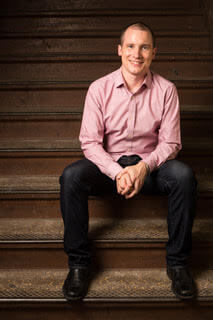 Midwestern Gothic staffer Elizabeth Dokas talked with author Tom McAllister about his novel How to Be Safe, media interactions with tragedy, social media and online life, and more.
Midwestern Gothic staffer Elizabeth Dokas talked with author Tom McAllister about his novel How to Be Safe, media interactions with tragedy, social media and online life, and more.
**
Elizabeth Dokas: What’s your connection to the Midwest?
Tom McAllister: I lived in Iowa City for two years when I was in graduate school. Prior to that, I had only been as far west as Gettysburg by car, and had once skipped over the rest of the country to go to California with my parents.
I have fond memories of my time in Iowa City, though I was personally not doing well then: I was just out college, and in a long-distance relationship, and still not over my father’s death, and I was not emotionally prepared for any of it. Mostly what I did when I was there was drink cheap pitchers of beer and talk about what I would do with myself once grad school was over.
But I also got engaged in my Iowa City apartment, and I made a lot of great friends there, and I learned so much that didn’t actually register with me until years later, when I was ready to start listening.
I haven’t been back since, though I’d love to go. I have been to Wisconsin on four different occasions in the past three years, and have found it to be a really wonderful place.
ED: Your newest novel, How to Be Safe, is set in a small town. From a writer’s perspective, how is crafting a distinctly small town setting distinct from a larger city or even a slightly larger town?
TM: I grew up in Philly, and have always identified myself as a Philly guy, though I’ve lived in the New Jersey suburbs since 2006. My town isn’t small, but it’s small enough that I see a lot of the same people around now, and I wonder whether they notice me, or why they would even care. There are still enough people here that I can disappear and blend in, which is a relief for me.
When I was writing the small (fictional) town of Seldom Falls, PA, I was thinking about a place on an even smaller scale than this. Because I was beginning with a school shooting, one thing I wanted was for it to be in a place that’s small enough that everybody knows everybody. Or they think they know everybody. Or they know just a little bit about most of the people. It doesn’t make the event any more tragic than if it happened in a major city, but it feels even more weirdly personal to the people there. It wasn’t just some teenager who died, but Sara, the girl you know from around the corner, whose mom is nice and works at the deli. I really liked the idea of integrating these little bits of biography into the book, and I think that’s an essential part of a small town’s character.
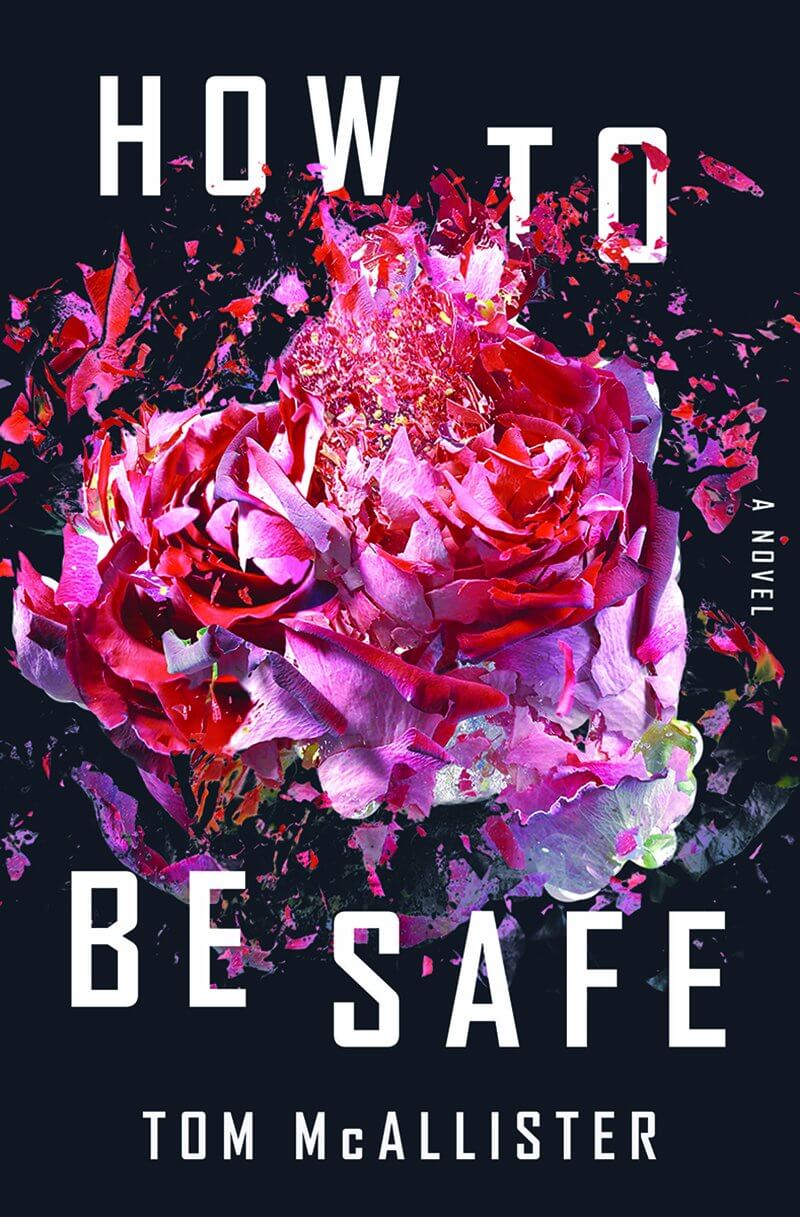
ED: How to Be Safe revolves around many modern political and social concerns, with gun violence at a school taking center stage. Did you have a particular situation in mind when exploring this type of gun violence (school shootings), or did you want to separate the narrative arc from real life occurrences? Why?
TM: I started working on this just after the Sandy Hook shooting, but I didn’t want to hew too closely to any specific event. I read Columbine by David Cullen and One of Us by Asne Seierstad, and I had always closely watched the real stories of mass public violence. They all tend to follow very similar patterns, which we sadly know so well by now. I didn’t want to too closely imitate any specific news story, but they all influenced it. One non-shooting story that had a big impact on this book was the aftermath of the Boston Marathon bombing, when people on reddit tried to solve the case by zooming in really closely on blurry photos, and nearly ruined some poor kid’s life by declaring he was probably the bomber. That really helped me to find the entry point to the novel, as Anna is falsely accused, for no good reason, of being involved in the shooting at her school.
ED: Much of this book also explores how issues of gun violence in society interact with the media, often butting up against issues of representation, skewing of facts, and victimization — of actual victims or not. What about media interactions with tragedy felt integral to you in portraying that tragedy?
TM: This ritual we go through is insanity. It’s incrementally worse every time. As I type this, a prominent conservative media figure is being boycotted because she taunted a literal child on Twitter because she’s angry at him for protesting guns. But even before David Hogg made gun people lose their minds, the media cycle was destroying us. There’s this desperation to churn content as quickly as possible, so after the shooting, the media descends and just chews people up and moves on the second there’s a new tragedy. They look very serious while they’re doing it, but they’re picking the bones of the town clean. It’s horrible to watch. I wanted the novel to address that dynamic clearly and directly, not to blame the media for the crimes, but to really dig into the ways our media culture is ruining our brains.
ED: How do you write a narrative about political issues that doesn’t devolve into political caterwauling, or a rehash of your own political views?
TM: This was really hard for me. Because I didn’t want to write a book that amounted to propaganda. I wanted it to be complex and compelling and difficult and all the other things you want from a novel. But also I have really strong feelings on all these issues. For me, the solution came in centering on this one specific voice, this woman who is specific and weird and funny (I hope) and angry. It let me channel some of my own anger and anxiety through her, but also forced me to shape the story around her and focus on narrative. I had to get deeply into her story and be faithful to it, wherever it took me. I don’t think I could have pulled that off if I’d gone with an omniscient narrator; I needed some constraints to make it work.
ED: Much of How to Be Safe explores how feminism and misogyny function in our society, and the main character, Anna, is a woman. As a man, did you find writing a female main character difficult? Did you find writing about experiences she had specifically as a woman difficult?
TM: It took me a long time to settle on the POV character and the voice for this book. Once I found the rhythms of Anna’s voice, I still resisted it, because I was very afraid of totally screwing it up. I’ve read and loved many books by and about women, but wasn’t sure I could do it myself.
When I’m deep into a project, I talk to my wife about it a lot, and in this case, I often ran scenarios by her to understand how she might perceive a situation differently than I would. When we walk into a crowded room for a party, what things does she notice right away (especially things that I might miss or take for granted)?
But also, the most important thing was Twitter, and social media in general. Just logging in every day, following smart and funny women, resisting the dumb urge to constantly respond to them, and just listening. Learning about the various indignities most women face day to day. Especially listening when they shared stories of male writers totally misunderstanding the internal lives of women.
ED: What did you find important about writing a female character to experience these conflicts? What was more potent, to you, than featuring a male main character in the same setting?
TM: It took me a long time to realize that school shootings alone aren’t the thing that’s upsetting to me; it’s a question of vulnerability. It’s about power and helplessness and being afraid in public. I’m a member of a lot of privileged groups, and so, even though I feel that vulnerability, I experience the world differently than lots of other people. I thought a women’s perspective would give me more access to this conflict, and also be a more honest telling of the story.
ED: What were your inspirations for this novel? Are these issues that bother you personally, or did you pull it more from what the larger public is concerned with? How do those inspirations affect your writing?
TM: This book is a big bundle of my obsessions and fears rolled into a weird little ball. Parts of the How to Be Safe chapters were pulled from an essay I’d worked on and abandoned years ago. The stuff about gun violence has always driven me crazy, especially since I teach at a large state school where something like this could happen any day. The randomness of a public attack (with a truck, gun, bomb, whatever) is terrifying to me, and I can’t find a way to feel okay about it. And the overheated rhetoric of the book, the push toward absurdity, comes from spending my life immersed in the hot take cycles of online life.
ED: What’s next for you?
TM: I have about 11 pages of a Word document written on something I’m refusing to call a novel until it turns into something else. I’ve struggled with it so far; it’s one of those things where I had a basic idea, but every time I try to get it started, it’s just not working. It’s also possible I’m avoiding seriously working on it because I don’t want to commit to another big project again.
I would really like to be able to write a book of nonfiction, but a) I only have the vaguest ideas for the focus of it, and b) I’m not sure anyone will let me do it. But I really enjoy exercising that part of my brain, and it’s been a while since I’ve worked seriously on longform nonfiction.
This is an unsatisfying answer, I realize.
**
Tom McAllister is the author of the novels How to Be Safe and The Young Widower’s Handbook, as well as the memoir Bury Me in My Jersey. His shorter work has been published in Best American Nonrequired Reading, The Millions, The Rumpus, and Hobart, among others. He co-hosts the Book Fight! podcast, and is nonfiction editor at Barrelhouse. He lives in New Jersey and teaches at Temple University.
April 12th, 2018 |
 Midwestern Gothic staffer Kate Cammell talked with author Jesse Ball about his book Census, real work, the importance of contradicting oneself, and more.
Midwestern Gothic staffer Kate Cammell talked with author Jesse Ball about his book Census, real work, the importance of contradicting oneself, and more.
**
Kate Cammell: What’s your connection to the Midwest?
Jesse Ball: I live in Chicago and teach at the School of the Art Institute.
KC: Coming from New York to Chicago, how have you found living in a big city that’s also Midwestern? How is it different than other big cities.
JB: Many awful things about the United States that exist but are hidden or kept quiet elsewhere are quite obvious and visible in Chicago. These include problems of race, problems of wealth disparity, problems of corporate influence, problems of gerrymandering and political malfeasance. It is in this way a most American city.
KC: Your latest novel, Census, was just released in early March. It’s received extensive praise, with one of the greatest champions of its excellence being The New York Times. In the Times book review, the author said of your novels: “They don’t distract from the specter of suffering; they insist upon – and help in – its contemplation.” This exposition and meditation on suffering feels like it’s connected to a sense of writer’s duty. When you’re writing your novels are you aware of this sense of duty, or do you find it to be something more innate that is simply attached to the act of storytelling in general and; therefore, something that doesn’t quite announce itself to you as much as exist?
JB: It is a property of real work. The thing that’s difficult is to find the opportunity in life to make one’s real work, whatever it might be. It need not be a thing of books, or music, or film, art, etcetera. It can be anything one does with a full heart.
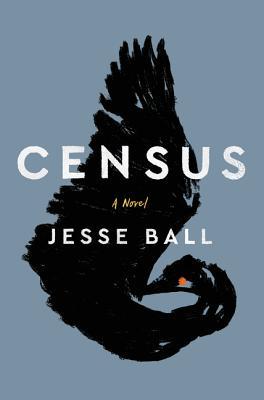
KC: Census tells the story of a widower father who is terminally ill and seeking care for his son who has down syndrome. The book was inspired by your own brother, Abhram, who had down syndrome. How did growing up with your brother influence the way you wanted to approach writing this book?
JB: This is a matter the book answers better than I do.
KC: You’ve published a wide range of work including children’s books, poetry, and novels. Is there one genre you find particularly rewarding to write?
JB: It is rewarding to write poetry, but people believe they cannot read it.
KC: Do you have a specific process for you writing, like the time of day or place where you work? If so, does the process vary between genres?
JB: Yes, I have a process, but I have gone into it at length elsewhere, so I won’t do so here. The main thing is to have it matter to you a great deal to say a particular thing and then to find a way, any way, to say it.
KC: As a teacher at the School of the Art Institute of Chicago, you have opportunity to influence budding writers. Is there a piece of advice that you give your students that you wish a teacher would have shared with you back when you were a student?
JB: I had some wonderful teachers and I’m not sure I heard all the remarkable things they said to me. I would not necessarily want for them to have said different things. But I do think it is important for artists to feel comfortable trying on many masks with the work they do, and contradicting themselves at every opportunity.
KC: What’s next for you?
JB: Who knows!?
**
Jesse Ball (1978-) Born in New York. His many and varied works of absurdity have been translated into more than a dozen languages.
April 5th, 2018 |
Midwestern Gothic staffer Carrie Dudewicz spoke with photographer Michelle Pretorius about her creative process, how the Midwest defines her American experience, photographing seasonal changes, and more.
Born and raised in South Africa, Michelle received a B.A. at the University of the Free State in Bloemfontein. She has lived in London, New York, and the Midwest. She holds an MFA in Fiction Writing and is a doctoral candidate in creative writing at Ohio University. Her first novel, The Monster’s Daughter (published by Melville House) is an American Booksellers Association Debut Voices pick and was awarded a 2016 FAW Literary Prize. She currently lives in Columbus, OH.
***Carrie Dudewicz: What’s your connection to the Midwest?
Michelle Pretorius: I was born and raised in South Africa, but immigrated to the U.S. sixteen years ago. The first city I lived in was Milwaukee. Since then I’ve lived in Chicago, and in Athens, Ohio. I currently live in Columbus. The Midwest represents my new life, my new home in my new country. I’m a city person, and I like how Midwestern cities are a diverse melting pot, while simultaneously having an openness and warmth. I’ve taken so many Lyft rides with immigrants that tell me that (various cities) in the Midwest are the best place to live. I like that.
CD: How did you get started in photography?
MP: When I was a child, all I wanted was to take pictures with my parents’ camera. I couldn’t wait to get my own. That was in the days of the old point-and-shoot cameras with the film cassettes that you’d just drop in the back. Film was expensive and you had no control over what the end result would be with those cameras. Taking your film in to be developed was always hugely exciting, since you had no idea whether your pictures would actually turn out all right. I’ve always loved taking pictures in natural light and under low light conditions and, let’s face it, those old cameras needed everything to be taken in bright sunlight or with a flash. Which is why I loved the advent of digital. I never went to school for photography. My husband introduced me to more sophisticated cameras and techniques – he used to be an art and wedding photographer – and bought me my first DSLR. From there I started doing gigs as a freelance event photographer. I’m a writer, so I often find myself taking headshots for other writers I know as well. I have recently become interested in digital illustration and the art of photo manipulation. I’m only a beginner in the field, but am planning a project that combines story with digital imagery to explore the form further.
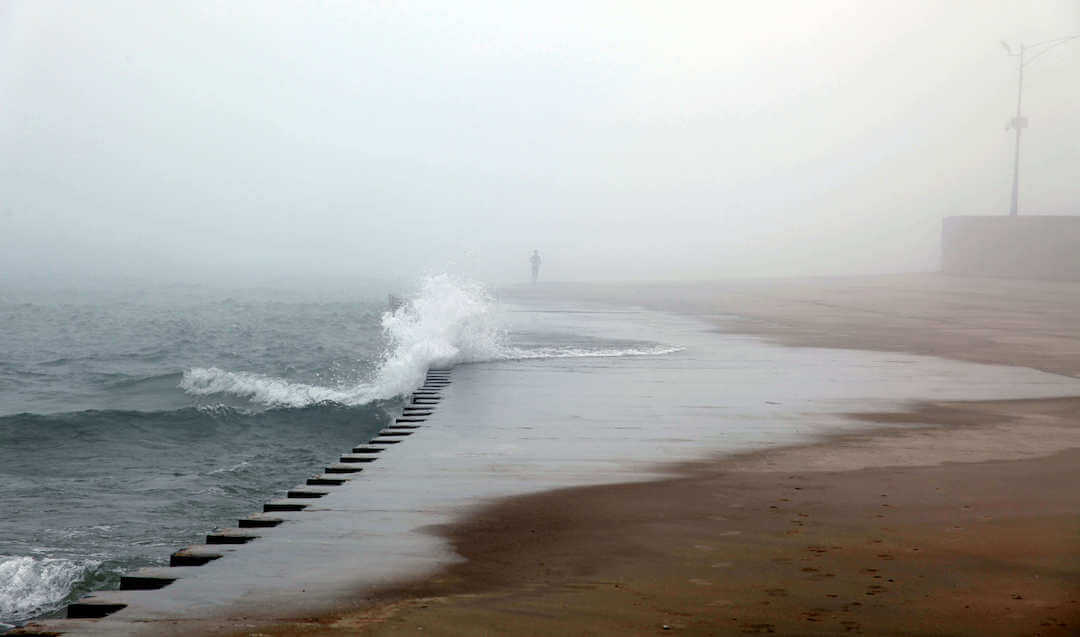 CD: What are your favorite things/people to photograph?
CD: What are your favorite things/people to photograph?
MP: I love fog, how it makes the familiar strange, and lends an air of mystery to the mundane. When I lived in Chicago, because of the lake freezing in winter and still being extremely cold once the seasons started shifting, we’d get the most amazing fog in the spring. If I woke up in the morning and it was a particularly foggy day, I’d grab my camera and spend hours at the lakefront taking pictures of people and the landscape in the fog. I particularly love that the equipment that can handle the lighting conditions so well and that with a few tweaks in post-production, I can precisely render the image I want to convey.
I also really like taking portraits. Particularly women’s portraits. My experience has been that most women have a vulnerability, a variation in expression, that translates to some amazing imagery. Not to dismiss the guys! It’s just that many of the men I have worked with have trouble relaxing in front of the camera and just letting themselves be. Although, at the risk of contradicting myself, one of the most interesting portraits I’ve ever taken was of a man when I was doing a “test” shot for light, and he let his guard down. So, I guess I love photographing people when they are not aware of me doing it. You run into some trouble with this, obviously. Everybody wants control over their image, so it is harder to do candid street photography, especially now that there are cameras everywhere. The moment the camera comes out, people change. Which is less interesting.
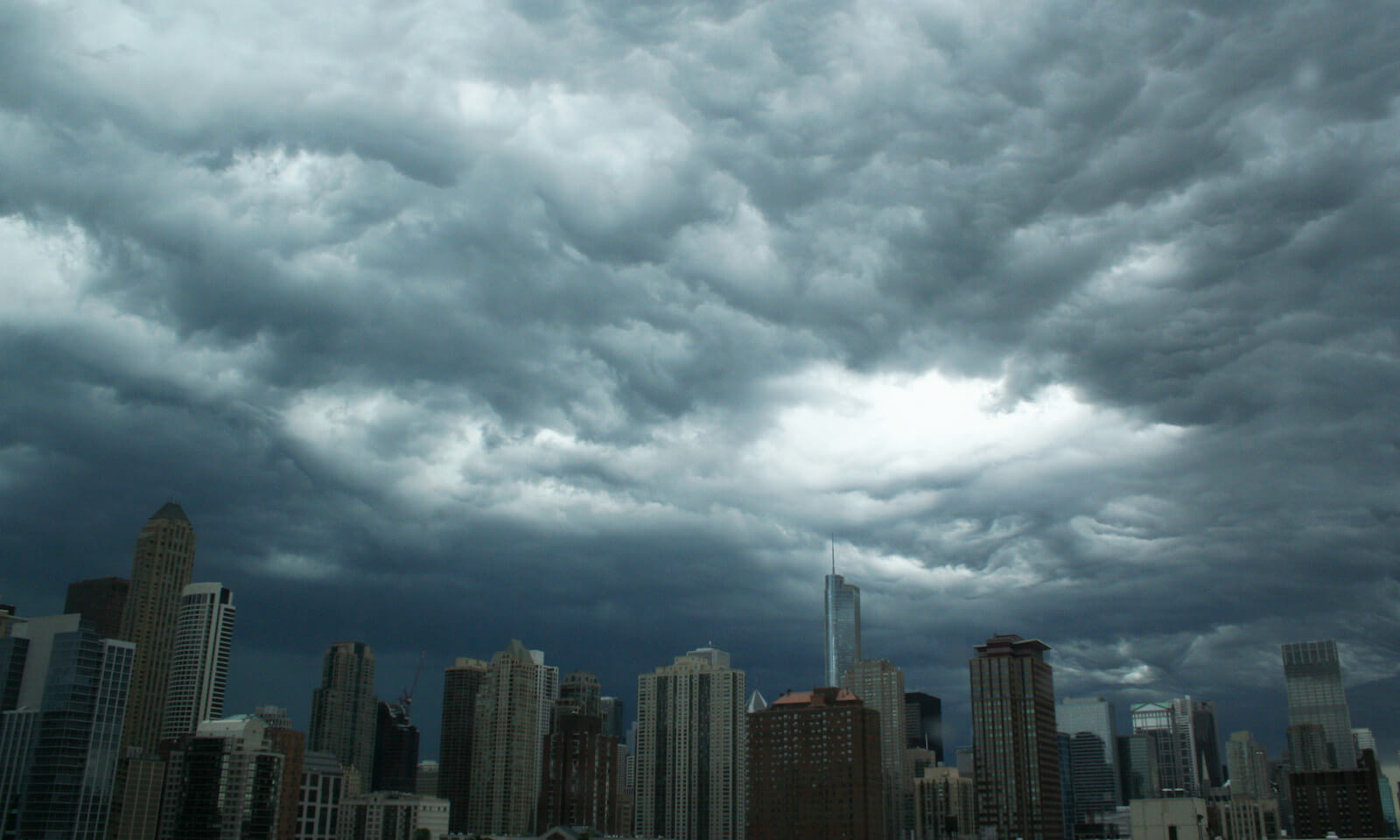
CD: What about the Midwest do you find the most beautiful?
MP: I love the change of seasons here. We have seasons in South Africa, but not as pronounced and extreme. I experienced snow for the first time in the Midwest, and some of the most amazing fall foliage and fog. I have already gushed about my love of fog. I experienced fog while I lived in London, but I was more familiar with Chicago when the fog started becoming really dense and loved how it altered your perception of the city. I still find the weather in the Midwest to be wondrous. I’ve lived in New York City and traveled a lot around the U.S., even as far as Hawaii, but I’ve taken my favorite photographs here in the Midwest.
CD: How do you think literature and photography interact? What benefits do you see in having photography as part of a literary journal?
MP: Usually the two are not symbiotic. When we read, we form images in our mind. I could write a story and not two people would conjure up the same image when they read it. It’s part of the fun of reading, creating these worlds in our mind’s eye. A photograph shows you the exact image and feeling that the photographer intended to invoke. If an image accompanies a story, the reader usually uses it as a reference point. Which may be a great shorthand to place the reader in a specific environment. One place where image and story interact really well is children’s books, and I’m very interested in exploring the possibilities of the form further.
I think that literary journals are about the art of story, in words, yes, but also the story that an image can invoke. I think a journal like Midwestern Gothic, that is focused on a specific place, is enhanced by including the visual expression of the photographers and artists in that place.
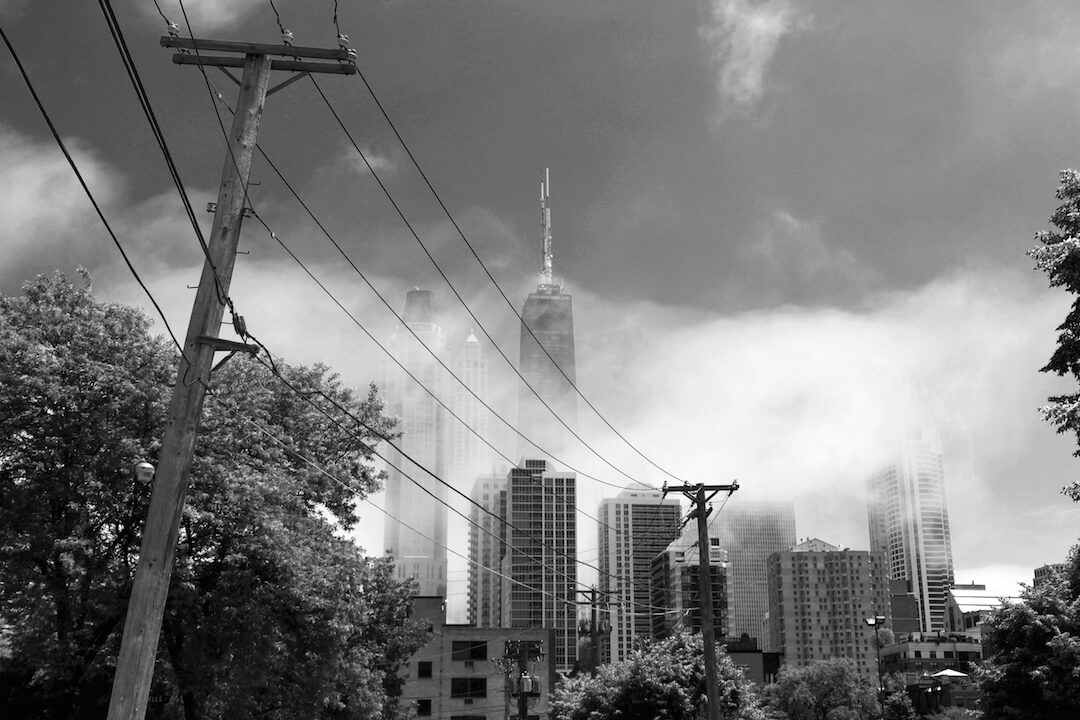
CD: Is there a certain photo (or photos) you’ve taken in the Midwest that you love? If so, what was the inspiration behind these photos? How do these photos encapsulate the Midwest?
MP: I took a few great photographs of Chicago while I lived there. The city, with its extreme weather and constant change, is full of gorgeous imagery. I’ve included a few I took of the fog and a city scape taken during some interesting cloud formations. Usually I don’t plan a photograph in advance. I tend to go out with a camera and see what happens. The concept and tone usually forms later when I edit the raw photographs in Lightroom or Photoshop.
CD: What’s next for you?
MP: I’m in grad school for creative writing at the moment, and I’m working on my second novel, so I’ve not had a lot of time to spend on my photography — but I’ve been taking classes in digital illustration and am planning a project in which I can combine my writing skills with my photography.
***Our Views from the Heartland series is a new series we started to give some recognition to the incredible photographers who submit their photos to us regularly. In it, we talk with some of our favorite photographers who we feel capture the essence of the Midwest in their incredible photos. Each month, we’ll post a new interview with a photographer in which we discuss their creative process, the intersection of photography and literature, and other fascinating topics.
March 30th, 2018 |
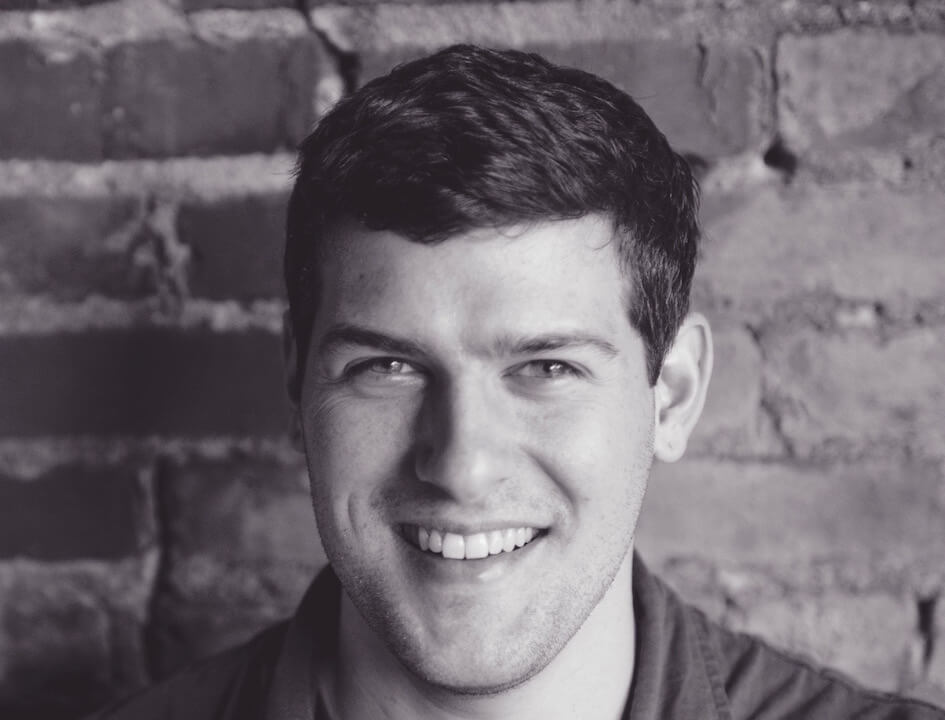
Photo Credit: Tara Monterosso
Midwestern Gothic staffer Kate Cammell talked with author Matt Young about his book Eat the Apple, the art of passive aggression, the difficulty of writing about memory and oneself, and more.
**
Kate Cammell: What’s your connection to the Midwest?
Matt Young: I moved to Fort Wayne, Indiana when I was eight, lived there until I was 18, moved back to attend grad school in Ohio when I was 27, and then I left again. My wife and I go back once or twice a year now to visit family.
KC: Are there any memorable lessons you’ve taken with you from your time spent living in the region?
MY: I learned the art of passive aggression. My family tends to operate on a passive aggressive level anyway, but I think the Midwest amplified it. People are polite (for the most part—there are always exceptions) to a fault. Direct confrontations are rare. They cut you in other ways that are less expected.
On a lighter note, I also learned how to drive in the snow. I live in Western Washington now and have discovered snow horrifies people west of the Cascades—an inch grinds cities to a halt, people abandon their cars on the sides of roads.
KC: Are you conscious of any ways that the Midwest influenced your writing in terms of style or process?
MY: Understanding passive aggression has also helped me harness sarcasm and wit and snappy dialogue. It’s also a good way to build tension and complicated characters. I’m sure the way I think and write and the words I use and the images I focus on are all informed by how and where I grew up in some way as well.
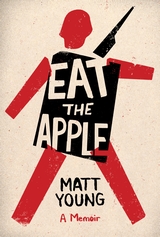
KC: Your first novel, Eat the Apple, a collection of flash nonfiction, was recently released. The stories recount your experience during your three deployments in Iraq. What were the most challenging and exciting parts of addressing your memories from this period?
MY: I didn’t set out to write this book. I initially pushed away from writing about the war and my time in the Marines. I’d tried fictionalizing my experience during my undergrad degree at Oregon State and the stories lacked reflection and nuance, the characters were arrogant and macho and bullshit and I came away from trying to write those stories feeling frustrated and unfulfilled.
When I did eventually write the first few stories for what became the book it was for a grad student reading close to five years after those first attempts at writing. I wanted to read new material and so I turned some bar stories into short nonfiction pieces for the event. The voice that came out was sad, and irreverent and disgusting and it got me hyped. I finished out that first year writing fiction and then that summer I dove into the nonfiction headfirst.
Dredging my past was not enjoyable. Whoever tells you writing is therapy is a cop. That’s utter crap. Writing about memory and yourself is difficult. It takes a lot of reflection and recall. It’s traumatizing to confront a traumatizing past. It was hard to keep that identity at arm’s length. I didn’t always do a good job.
KC: What drew you to the flash form to tell these stories?
MY: I am crap at writing long, for one. But also, I like lyricism and imagery and flash is a great vehicle for those things. Flash nonfiction also mirrors the way memory works—or at least the way my memory works. It’s fragmented and fractured and a lot of the time nonlinear. I do also feel like that form revealed itself; I didn’t go in with that plan. It just kind of happened and I let it happen
KC: Did you work on these stories while you were in Iraq, or did you need to give yourself distance from them and write them after?
MY: Nope. When I was in the Marines there didn’t seem much point in writing. Then, when I left the Marines I wanted to leave it all behind and lose myself in the woods, try and forget it all. I ran away to Oregon for college to be a fisheries and wildlife major. I had this romantic idea of isolation, that I didn’t deserve the comforts of humanity or some such shit. Of course the walking alone in the woods is not what scientists do. It was competitive and fast-paced and the students were very into it. People screeched bird calls in my face. I kind of hated it. Then an English professor suggested that I switch majors to English after I wrote a paper about Stephen Crane’s “The Open Boat.” So I switched, started taking more lit courses and writing courses, discovered there was power in writing, tried my hand at crafting stories about my experience, and hated them, took more writing classes, applied to grad school, wrote stories about the Midwest (a couple of which were published here). Ultimately, I joined the Marines in 2005 and didn’t write a single true word about it until 2014. I needed time.
KC: As a creative writing teacher at Centralia College, you have the opportunity to influence budding authors. Do you have a favorite piece of advice about writing that you share with them?
MY: Mostly, I try to tell them not to be afraid to experiment and to read widely. The intro class I teach covers all four genres. Students tend to be ambivalent about whatever they’re unfamiliar with, but they usually concede that messing around with poetry helps their nonfiction become more imagistic, or memory recall exercises in nonfiction helps with story generation in fiction, or character creation in fiction helps their dialogue in drama.
KC: What’s next for you?
MY: I’m going to try and enjoy the next couple of months and the release of the book as much as I can. My wife’s due with our first kid in a couple weeks. I’ll be traveling and doing events pretty regularly for the next couple months and I’ll be at Miami University in early August to teach a nonfiction workshop and do a reading. Any free time I have will be writing. I’ve got plans but I don’t want to jinx them.
**
Matt Young
March 22nd, 2018 |
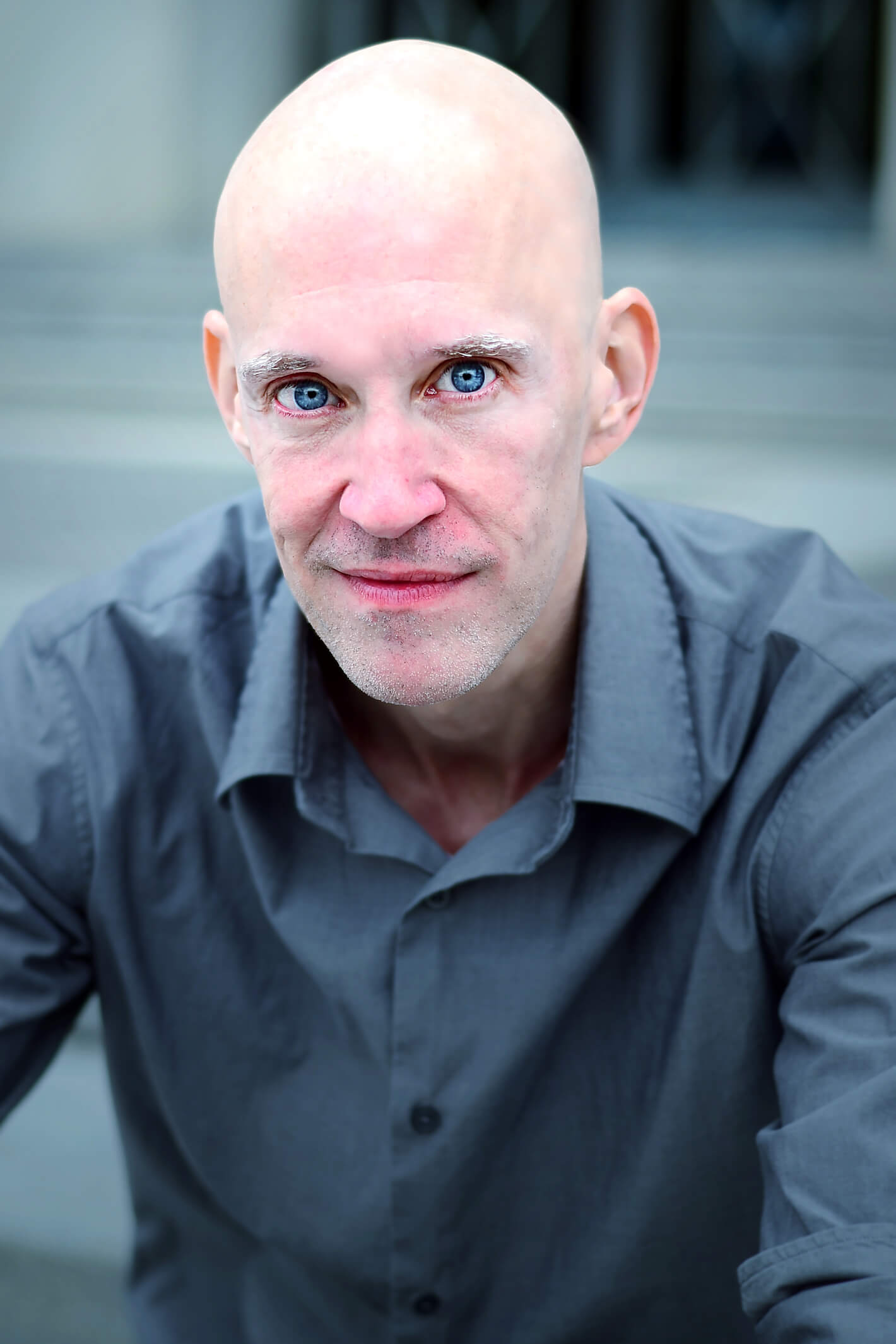 Midwestern Gothic staffer Sydney Cohen talked with author Raymond McDaniel about his poetry collection The Cataracts, nuances of the Midwest, his inspirations, and more.
Midwestern Gothic staffer Sydney Cohen talked with author Raymond McDaniel about his poetry collection The Cataracts, nuances of the Midwest, his inspirations, and more.
**
Sydney Cohen: What’s your connection to the Midwest?
Raymond McDaniel: I’ve lived in the Midwest — Michigan, particularly — since 1999, after a spell on the east coast. I also went to graduate school here, and that was the first time I had lived away from the Deep South and Gulf states. I have come to love the Midwest, but I remain very respectful of the multiplicity of Midwests, how complex their arrangements and histories are. When you are from Florida, you learn to be suspicious of touristic ideas about place; you also grow up with an idea of the Midwest that positions it as a sort of default America, the place from which every other place is a deviation. I feel lucky to have gotten to know it as strange and distinct, and not just the locale to which other locales refer.
SC: Your new poetry collection, titled The Cataracts, recalls both a waterfall and an opacity of the eye. Why did you choose this title for your collection, and how do your poems incorporate the book’s titular dual meaning?
RM: My dad went in for cataract surgery when I was ten years old; since he was a draftsman, the condition was making it impossible for him to work. Standard preparation for the procedure revealed he had lung cancer, and over the subsequent year-plus he had his lung removed, and a few ribs, and nearly died from a staph infection (still a sadly common consequence of spending time in a hospital). He survived, and eventually did get his cataracts removed, but by then he was no longer healthy enough to use his hands to draw. That’s the first context in which I knew the word, and so part of the book is about vision and what enables or complicates it, and how that influences how we make all sorts of things: art, meaning, objects. I didn’t know the other meaning of the word until later, but the way in which cataracts refer to a flood or a rush of water aligns with the environment I grew up in, and how I experience language and information. Seemed like too well-matched a pairing to resist.
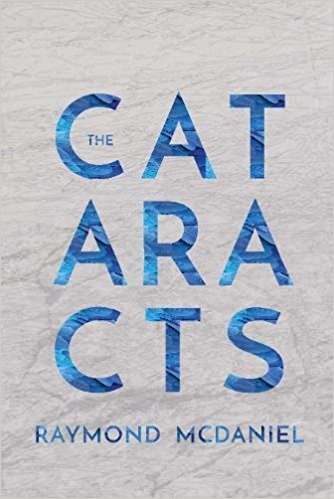
SC: Murder (A Violet), your debut collection, tells the story of an enigmatic assassin seeking refuge from her sordid past. What intrigues you about the anti-hero, and how does this figure fit into the larger narrative?
RM: I don’t know if I am comfortable thinking of that character as any kind of hero, anti- or otherwise. The closest she gets to heroic is simply refusing to do what she never should have been doing in the first place, even if she was also raised for that explicit purpose. What interested me most about her was just that question, though: how do people come to decide against themselves, against their own inherited and manufactured norms? And when and if that changes involves a moral repudiation, how do we regard the person who has made it? Forgiveness is fairly straightforward: it is (or isn’t) extended by those who have been done wrong to the person who wronged them. But redemption is more complicated; no one can offer or declare it for you, and you surely can’t claim it for yourself. So it’s hard to grasp or imagine, but it’s still a necessary concept. Her suspicion of its possibility is what keeps her morally alert, but it’s also part of what makes her so variable and uncertain in both her properties and her behaviors.
SC: You are also well known for your insightful and animated poetry reviews for The Constant Critic. What is your process when reviewing a poem? How does meriting the worth of other poetry inform your own writing process?
RM: Reading poetry and thinking about it in public has been a true pleasure, because writing one’s own poetry is — for me, at least — a cloistered, claustrophobic feeling. I am grateful for any poetry that isn’t mine, and what I’ve enjoyed the most about reviewing is simply trying to articulate some of the possibilities any given book offers its readers. Each book has the potential to add enormously to its readers’ capacities, and identifying what problems the poems detect and how they endeavor to solve or accommodate those problems can maybe present a reader a way to approach or inhabit the poems more readily. As for how that kind of reading informs my own process, well, I think it’s true that more closely you attend to others the more precisely you become yourself.
SC: You currently live in Ann Arbor where you teach at the University of Michigan. How has the vivacious literary community in Ann Arbor influenced or inspired your own writing? What aspects of your poetry, if any, would you consider distinctly Midwest?
RM: I was very lucky to host the reading series at an independent bookstore here in Ann Arbor (the late, lamented Shaman Drum Bookshop); I learned more as a bookseller, I think, than I ever did in graduate school. It’s simply the exposure to variety that matters the most: all those different titles in different disciplines, always new authors coming through, new customers introducing you to new works (or old ones that had shamefully escaped your attention). Literati has become my go-to bookstore here, and there, too, I can always count on the staff to have enthusiastic and richly informed opinions about a wider array of things than I could ever hope to learn on my own. Similarly, the kind of teaching I do means I am always meeting and working with students from all academic fields at all stages of development and scholarship; that range, too, means that I am always learning, always adding something new to the storehouse of ideas and perspectives. Writing in this environment, and in the Midwest, has allowed me to see my origins far more clearly and acutely than I ever would have had I stayed closer to home. So I doubt anyone would find anything they would characterize as Midwestern in the work, but I also don’t think the work would exist at all without the Midwest.
SC: Who are some poets that inspire you, and why?
RM: The poets to whom I return most frequently are C.D. Wright (because she was a heroic figure for me, and the first contemporary writer who struck me as saying “yes” to all her ways of being and speaking); Gwendolyn Brooks (because she was better at everything than everyone, and could deploy every one of her skills in a single poem in a way that was unified, effectual, and unmatched in its consequences); Frank Bidart (because his moral intelligence is more candid and rigorous than we might be able to see or admit); and Lorine Niedecker (because she was just so strictly and directly her own poet). I am also always impressed and increased by the work of francine j. harris, whose poetry is brilliant and strange and unlike anything else anyone else is doing or can do, and Paisley Rekdal, who simply goes from strength to strength, becoming wiser and more kind and more profound with each book.
SC: What’s next for you?
RM: I’m currently working on a nonfiction project about the history of namelessness. Other than that, more teaching, more reading, and trying to be as noisy and ferociously demanding a citizen as I know how to be.
**
Raymond McDaniel is author of Murder, Saltwater Empire, Special Powers and Abilities and most recently The Cataracts, all from Coffee House Press. He is form Florida but currently teaches at the Sweetland Center for Writing at the University of Michigan, Ann Arbor.
February 22nd, 2018 |




 Midwestern Gothic staffer Laura Dzubay talked with author Terese Mailhot about her novel Heart Berries, willful blindness, knowing when you’ve hit your voice, and more.
Midwestern Gothic staffer Laura Dzubay talked with author Terese Mailhot about her novel Heart Berries, willful blindness, knowing when you’ve hit your voice, and more.
 Midwestern Gothic staffer Kate Cammell talked with photographer Laura Migliorino about her creative process, the overlooked diversity of suburban life, outside perspectives of American culture, and more.
Midwestern Gothic staffer Kate Cammell talked with photographer Laura Migliorino about her creative process, the overlooked diversity of suburban life, outside perspectives of American culture, and more.


 Midwestern Gothic staffer Kathryn Cammell talked with author Curtis Sittenfeld about her collection You Think It, I’ll Say It, the importance of place, adapting a classic, and more.
Midwestern Gothic staffer Kathryn Cammell talked with author Curtis Sittenfeld about her collection You Think It, I’ll Say It, the importance of place, adapting a classic, and more.
 Midwestern Gothic staffer Elizabeth Dokas talked with author Tom McAllister about his novel How to Be Safe, media interactions with tragedy, social media and online life, and more.
Midwestern Gothic staffer Elizabeth Dokas talked with author Tom McAllister about his novel How to Be Safe, media interactions with tragedy, social media and online life, and more.
 Midwestern Gothic staffer Kate Cammell talked with author Jesse Ball about his book Census, real work, the importance of contradicting oneself, and more.
Midwestern Gothic staffer Kate Cammell talked with author Jesse Ball about his book Census, real work, the importance of contradicting oneself, and more.





 Midwestern Gothic staffer Sydney Cohen talked with author Raymond McDaniel about his poetry collection The Cataracts, nuances of the Midwest, his inspirations, and more.
Midwestern Gothic staffer Sydney Cohen talked with author Raymond McDaniel about his poetry collection The Cataracts, nuances of the Midwest, his inspirations, and more.




